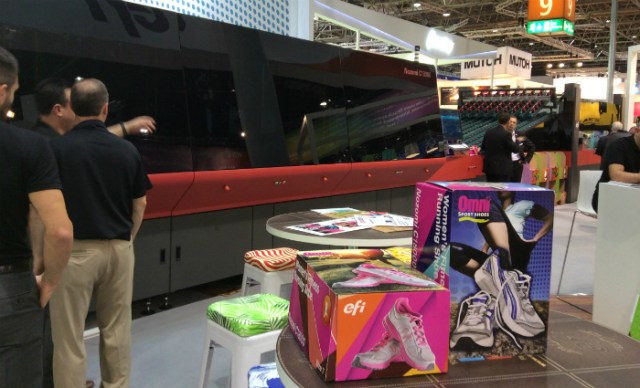
With the ongoing credit crunch making it difficult for printers to raise finance, sales of secondhand machines are booming as more and more companies turn to the used equipment market. Unlike machines used in some other print disciplines, one of the major strengths of finishing kit is that binders, gatherers, stitchers and the like are robust beasts that can continuously churn out high-quality work for 20 years or more. And while it’s true that technological advances have been made in the sector, especially when it comes to levels of automation, the basic fundamentals remain the same. So, it’s unlikely that older models will be completely obsolete in the short to medium term.
Given the aforementioned factors, you may well ask why more people haven’t historically bought used machinery. Unfortunately, for some people there is still a stigma attached to purchasing used equipment and they would much prefer to pay extra for a new model. However, not only does secondhand kit offer massive cost savings on buying new, but it also allows people to dip their toe in the water before taking the plunge and purchasing an expensive machine that may not be right for their business. And if you follow some simple guidelines, then you could pick up a machine that looks as good as new and may help to turn your business around.
If you haven’t bought used kit before and you’re contemplating doing business with a secondhand dealer, then it’s important you carry out some quick and easy safety and security checks to ensure the quality and reliability of what you are buying. The pages of PrintWeek are a good starting point for those looking to track down dealers with a strong track record.
With kit fraud on the increase, security checks are particularly important. Kit fraud scams can take many different forms, but the principle remains the same: you will be offered a machine that the seller doesn’t actually own and usually for an unbelievable price – literally, a deal too good to be true.
Proven track record
Therefore, it’s important to check the credibility of the supplier that you are buying from and to get them to provide you with copies of the relevant paperwork to establish that they actually own the machine. It’s also a good idea to ask around the market and speak to other companies that have bought from the dealer. Be aware that just because they have an address, a telephone number, nice letterheaded paper and a website, it doesn’t necessarily make them legit. Another good way of establishing whether or not a company is bogus is to arrange a visit to their factory. This way you get to see for yourself how the business operates and ideally to watch the machine that you are thinking about buying in action.
When you have established that the dealer is a well-regarded operator that’s offering a genuine bargain, there are a number of things that you need to bear in mind in relation to the sale. Perhaps the most important factor is the brand that you are buying. Machines produced by some manufacturers, such as Heidelberg, Muller Martini and MBO, retain their value well, so if you need to upgrade in a couple of years time, you may not lose out too much with the resale.
Another tip worth bearing in mind is the machine’s previous owner. Most of the kit that’s on offer in the UK is sourced from around the world, but dealers say that Germany and Scandinavia offer the best bargains. Scandinavian machines tend to be cleaner and well looked after because, generally speaking, Scandinavian printers only operate one shift – so there are fewer runs on the machine. Also in Germany,
special grants allow printers to replace their old systems on a regular basis, which helps to provide a steady supply of relatively modern used equipment.
As well as the dealers, buyers shouldn’t rule out sourcing used kit from manufacturers who can sometimes offer even better bargains due to their in-depth knowledge of the machines. For example, a perfect binder, which will still provide a quality finish but will inevitably slow down due to general wear and tear after several years of use, can be taken in and refurbished by the machine’s manufacturer, making it almost as good as new.
Whether or not you decide to do business with the dealers or with the manufacturers, there is little doubt that if you choose to buy secondhand, you get all of the benefits of a brand new machine but you may only have to pay half of what a new model would cost.
TOP TIPS: BUYING USED KIT
• Before agreeing to buy goods outside your country, check that your government or customs authorities allow importation. Also check the rate of any customs duties or import taxes and any currency control restrictions
• Ensure you know exactly what you are buying. Check the age, serial number, impression count, specification and any accessories. Agree the terms on which you are buying the machine (e.g. “as is”, overhauled, rebuilt, good running order, ex site, Free on Board, C&F (freight paid), CIF (freight and insurance paid), loaded onto truck or into container, with or without warranty). Are there any local taxes to pay? If so, does the price include them? When is the machine available? Put all the terms and the price into a written order and ask your seller to sign it
• Ensure that the seller either owns the goods or has the authority to sell them. Ask, if possible, to see his purchase invoice and check that there is no outstanding finance commitment or legal charge over the goods
• Agree what will happen if the release of the machine is delayed. At what point will you be able to cancel?
• Where possible, inspect and test the goods yourself or have them inspected by a competent independent engineer. Ensure that they conform to your country’s health and safety rules
• Satisfy yourself that the seller of the goods is trustworthy. If he is a dealer, ask to speak to his customers or ask for some references
• Talk to your bank about the most secure way of paying for the goods. Payment by letter of credit is often safest for both parties. Do not part with any money until you are satisfied that the seller is creditworthy
• Ensure that the machine is dismantled and loaded by competent engineers, electricians and riggers and that it is well packed or secured on truck or in container before transportation. Rust protection is essential before a sea voyage and often insurance policies exclude rust damage. Request that containers be shipped below deck
• If possible, insure the goods against all risks on one policy from the beginning of the dismantling until reinstallation is completed in your premises. This avoids disputes between insurance companies over liability. Any damage should be noted, photographed as soon as it is discovered and notified to the insurer’s local agent
• Check that the electrical equipment is compatible with your local supply
• If the machine carries a guarantee, agree how this is to be implemented
Source: PressXchange
Read the original article at www.printweek.com.
Comment below to have your say on this story.
If you have a news story or tip-off, get in touch at editorial@sprinter.com.au.
Sign up to the Sprinter newsletter


